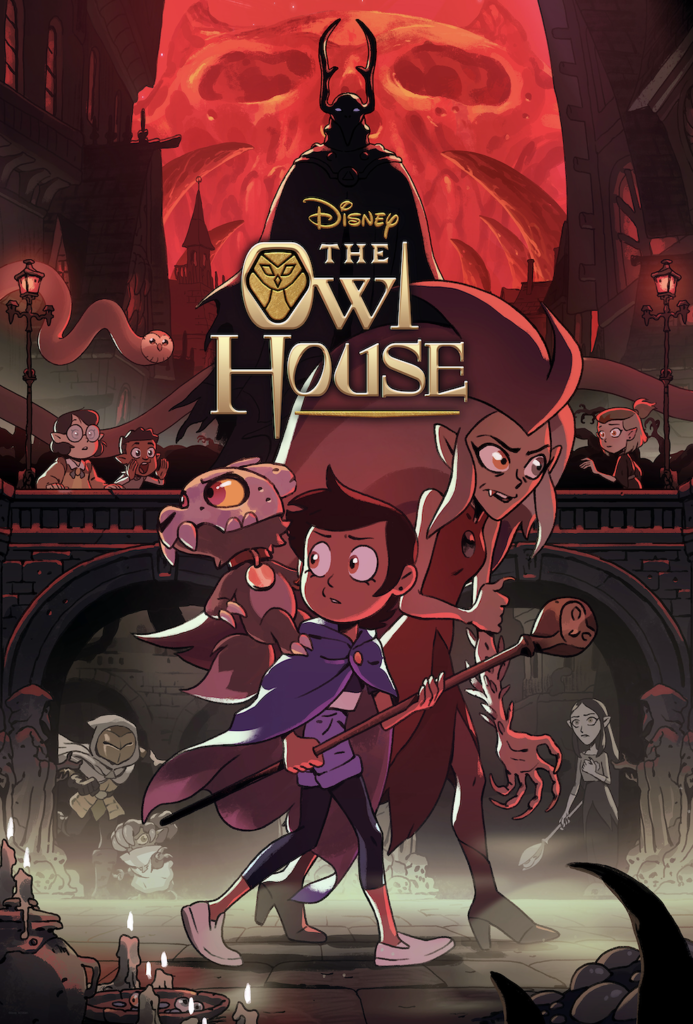Disclaimer from writer: All the opinions represented in this column will be of my own and represent me. There may be spoilers for Episodes one and four of Season Two. I will mark these areas with “*SPOILER.*” Regardless,I encourage you to watch these episodes. So read at your own risk. I hope you enjoy this piece and check out The Owl House if you haven’t already.
Imagine a world similar to Harry Potter or the various other incarnations of a magical fantasy world. However, there is no “Chosen One” or prophecy, it is more authentic, with a message like:
“Look kid, everyone wants to believe they’re “chosen.” But if we all waited around for a prophecy to make us special, we’d die waiting. And that’s why you need to choose yourself.”— Eda the Owl Lady
The show often calls out stereotypes seen in traditional magical fantasy media. If you have been intrigued by anything I have mentioned so far, you should watch The Owl House.

The Owl House is a Disney animated series about a teenage girl named Luz Noceda, who has been transported by a magical portal door to another realm. The portal door is owned by Eda, an older woman and the “most powerful witch on the Boiling Isles,” who inspires Luz to stay in the magical realm, and learn to become a witch. The other members of the main cast include King—a dog-like demon—and Hooty—the best character in the show(subjectively)—who is a part of the Owl House, a home this newfound family shares.
Season one has been full of worldbuilding, by introducing us to this “kid friendly hellscape on top of a giant carcass,” and the characters that inhabit it having many wacky adventures—a trademark of Disney animated shows. Season two lives up to the high standards that season one had—to the great pleasure of many fans including myself—with a lot of plot-focused epsiodes filled with character backstories and character development.
*SPOILER* This is seen in the first episode of the season which shows Luz sending to her mother as a reminder of the season one finale episode. It also serves to reintroduce the main cast again, and how their dynamics have changed as they are shown being closer to one another over the last season.
No cinematic reel is wasted, as everything lends itself to the big plot of the series. The smaller details highlight the entire show, and exemplify the love put into this show—from the little plot points and references, to the great facial expressions of Hooty.
Another aspect of The Owl House I enjoy is how it strays from its other counterparts in animation. The most popular and well-known aspect of this in The Owl House is Lumity, or the bond between Luz and Amity. Being able to show a romantically inclined relationship like this is already an achievement for The Owl House, and sets it apart as a trailblazer in the animation world. Another interesting facet of this relationship is shown in season two in which we see Amity, the love interest’s point of view. This gives the viewer not only another perspective, but also a vehicle to look into and judge the protagonist’s actions from a different stance. While animated shows typically stay with the one-sided (usually protagonist) perspectives, The Owl House lends itself to a more realistic view of a relationship, since relationships are a two-sided street and depend on the feelings of both parties involved.
That can also be said about Eda and her relationship with her curse. Eda’s curse, which can be a metaphor for a disability or chronic disease, has undoubtedly affected her life and relationships, showcasing how she has taken steps to succeed while being cursed.
*SPOILER*I feel this is best illustrated in season two episode four in which Eda’s mother, Gwendolyn, comes into the picture. We learn about her obsession to cure her daughter’s curse even though it always ends up in failure, and puts a strain on her relationship with her other daughter, Lilith. Eda shows herself capable of dealing with the curse herself with the use of elixirs to help manage it, and Gwendolyn learns to accept her children. These two actions are steps parents and children with disabilities have to learn.
I think it’s worthwhile to have an episode created and shown on screen. However, I applaud The Owl House for these choices. I also wish it was more explicitly stated to the audience. As an 18 year-old, I had some trouble making the connection and understanding this message in the series. I can only imagine the confusion everyone else might have felt as well. Nonetheless, I understand Disney’s desire to keep this under wraps.
These were some of my thoughts on the second season, which isn’t over yet for those curious. This article is written up to episode eight of season two, so there are still two more episodes until the hiatus and then the rest of season two to be looking forward to. How is Amity related to the collector? What will we learn about Philip Wittebane? Is there a connection from Creepy Luz to Amity? Will Hooty ever be fully appreciated and loved?
Will you ever watch The Owl House if you never watched it?
Spoiler Alert is an Opinion culture column used to give reviews for movies, television shows, or other related media.
Be First to Comment